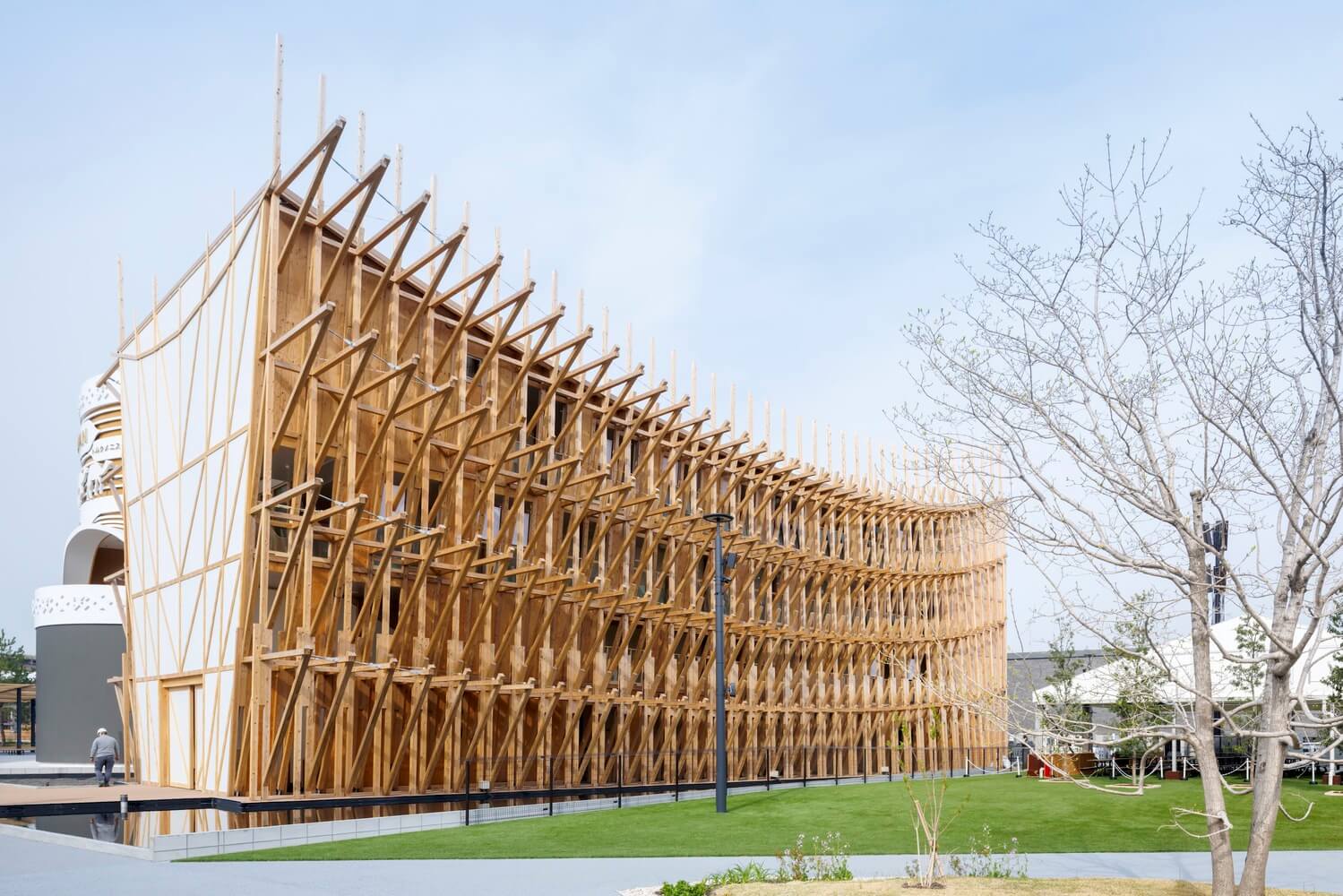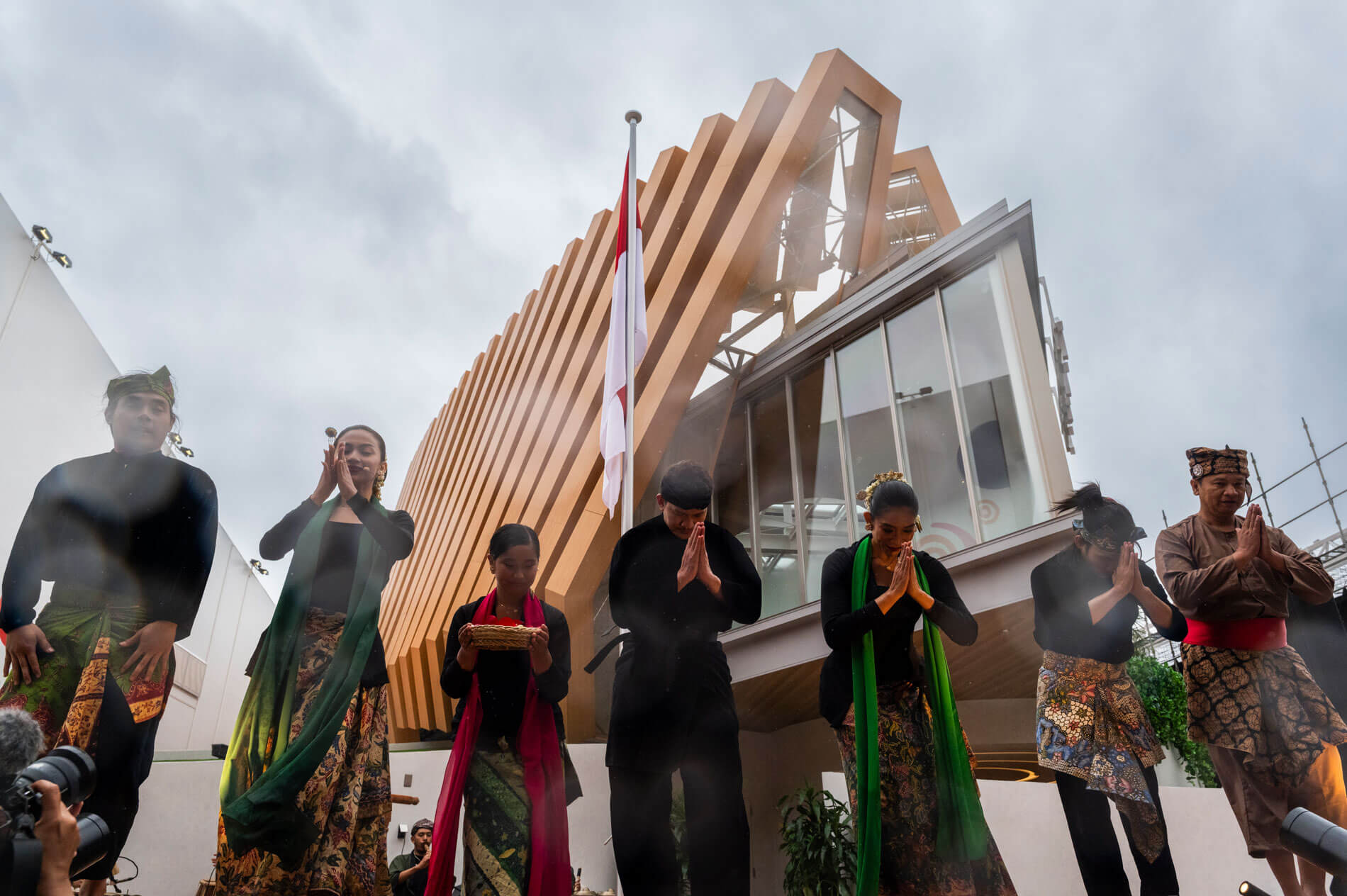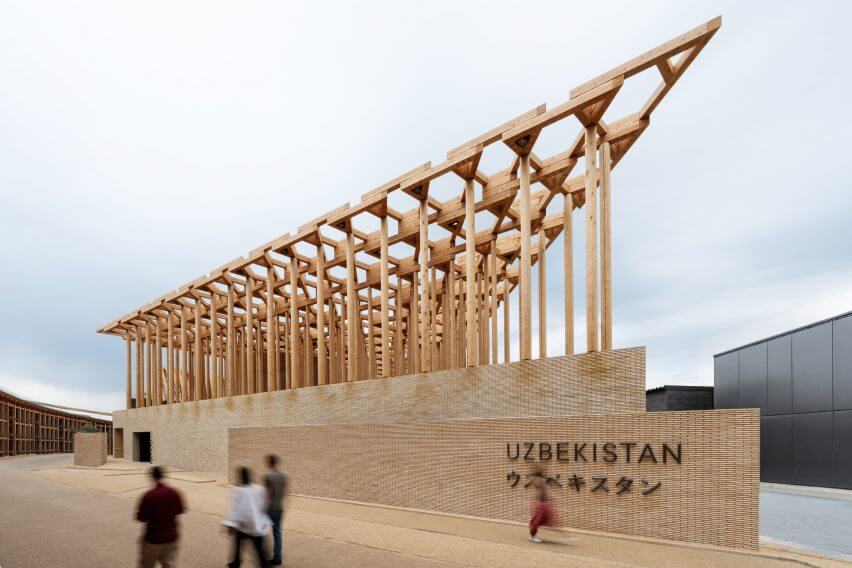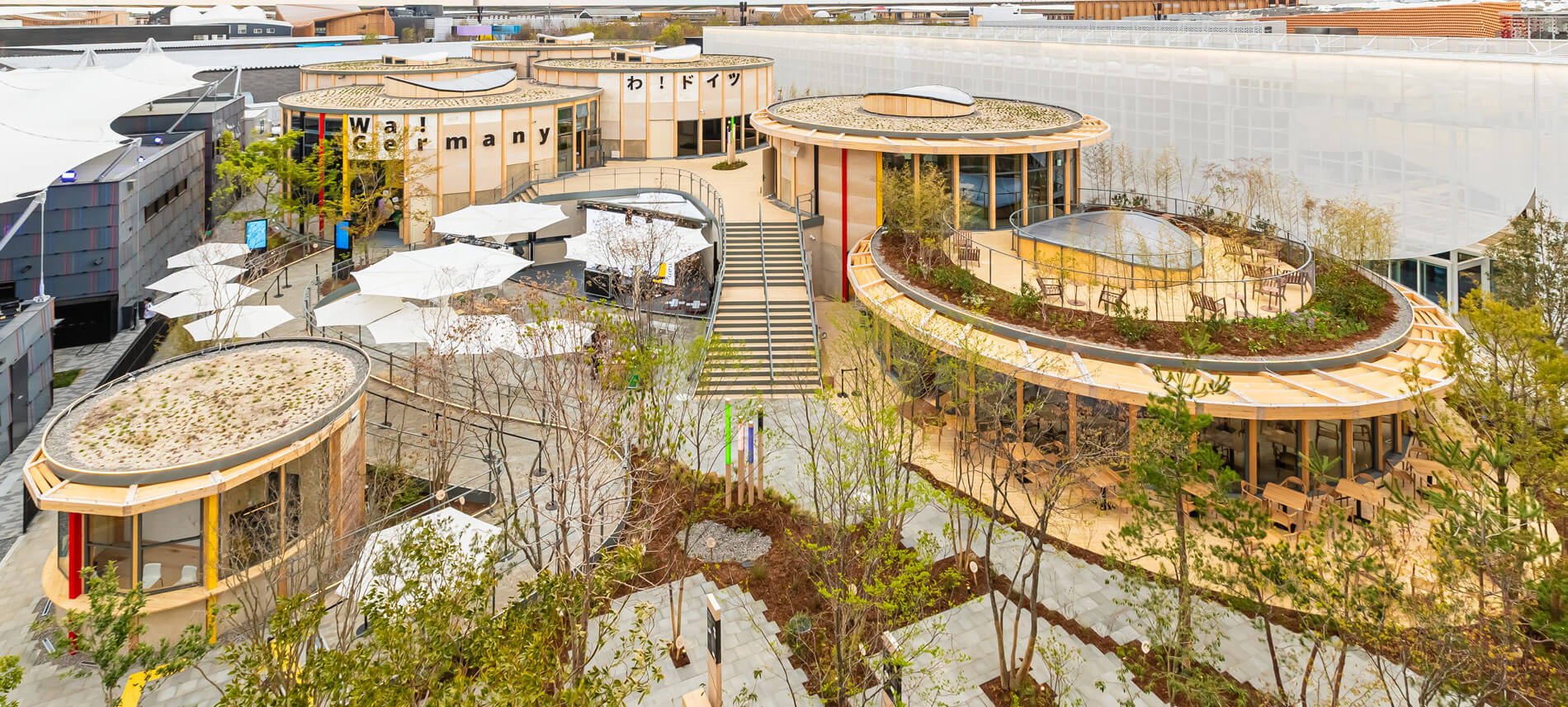Expo 2025 Osaka officially closed this week. Now, slivers of the Grand Ring—the wooden structure designed by Sou Fujimoto that perambulates around the Expo—will be relocated to build social housing in a Japanese peninsula city recently devastated by natural disasters. Other parts of the ring will remain in situ, providing a scenic backdrop for a new public park.
Bureau International des Expositions (BIE) Official Participant Awards were given to recipients this week in Japan, on the eve of Expo 2025 Osaka’s closing. The BIE has been the intergovernmental organization in charge of World Expos since 1931.
Official Participant Awards were broken down into categories based on type and size. The types are distinguished between projects over and under 160,000 square feet. The awards recognize “the organizations and individuals who have made extraordinary contributions to the success of the Expo,” BIE said in a statement.
In the larger architecture and landscape architecture category (projects over 160,000 square feet), the Saudi Arabia Pavilion by Foster + Partners won the Gold Medal. That project posited a series of separate, irregular volumes make up geometries and massings that recall the organic shapes of traditional Saudi villages.
The Silver Award in this category went to the Spain Pavilion—designed by NORME Studio, EXTUDIO, and Smart and Green Design. Stuttgart-based Atelier Brückner took home the Bronze Award for the United Arab Emirate Pavilion; and also a Gold Award for its work on the Uzbekistan Pavilion, in the self-built pavilion under 160,000 square feet category.
Lina Ghotmeh, fresh off her landmark competition win to design a new wing at the British Museum, won the Gold Medal in the smaller architecture and landscape architecture category (under 16,000 square feet) for her office’s work on the Bahrain Pavilion.
Ghotmeh’s design told a story about Bahrain’s ports. In plan, the pavilion is shaped like a vessel, and used impressive wood joinery on the exterior. The Czechia Pavilion, designed by Apropros Architects, and Manuel Herz’s Switzerland Pavilion won the Silver and Bronze Awards in this category respectively.

Angola, Algeria, and India were each given Gold, Silver, and Bronze Awards, respectively, in the larger external design category, which recognized outstanding “module” pavilions.
In the exhibition design category for large-size pavilions, China, Indonesia, and Canada took home Gold, Silver, and Bronze Awards respectively. The Indonesia Pavilion contained artworks by Mang Moel, Nasirun, Naufal Abshar, and Nyoman Nuarta, and was designed by Fujiya.

The Poland Pavilion designed by Interplay Architects, Philippines Pavilion designed by Carlo Calma, and Austria Pavilion designed by BWM Designers & Architects earned Gold, Silver, and Bronze Awards in the exhibition design category for small pavilions.
Peru, Vietnam, and Cambodia each were given Gold, Silver, and Bronze Awards in the smaller module pavilion category.

For the theme development category for bigger-sized pavilions, Italy, Germany, and Belgium were given Gold, Silver, and Bronze Awards respectively. Smaller pavilions recognized for their theme development were, Uzbekistan, Serbia, and Ireland. The module pavilions awarded in this category were Jordan, Brazil, and Chile.
The Panama, Ukraine, and Pakistan Pavilions were given Gold, Silver, and Bronze Awards in the saving lives category, respectively. In the empowering lives category, Kyrgyzstan, Kenya, and Yemen took home Gold, Silver, and Bronze Awards respectively. Gold, Silver, and Bronze Awards in the connecting lives category went to Benin, Armenia, and Guyana. Ghana, North Macedonia, Tonga, Kazakhstan, Jamaica, and Djibouti were also recognized by BIE.

Sustainability Awards
In recognition of sustainability excellence, the Germany Pavilion, Luxembourg Pavilion by STDM architectes urbanistes, Jordan Pavilion, and Equatorial Guinea Pavilion were each recognized. The Germany Pavilion, designed by LAVA Architects, centered around themes of the circular economy. It comprised of seven round wooden structures.
→ Continue reading at The Architect's Newspaper
